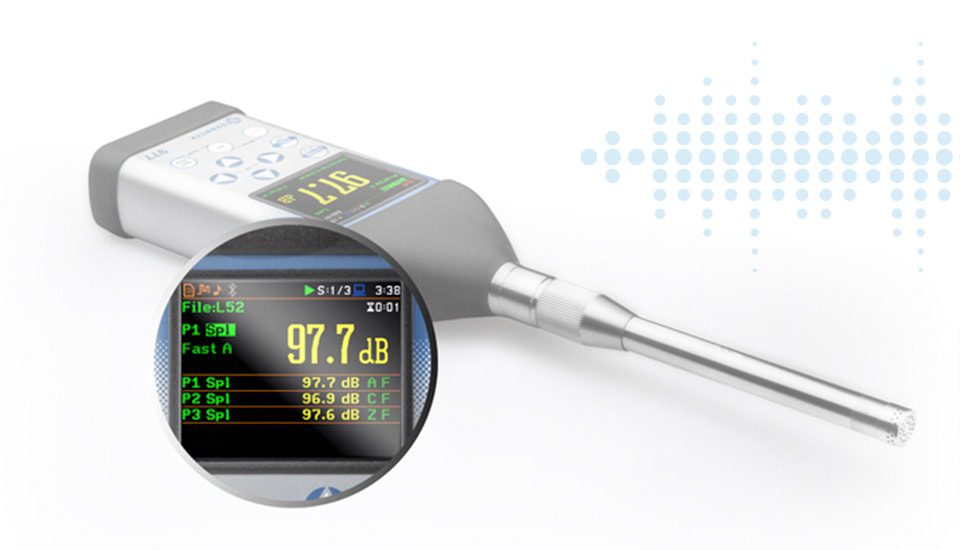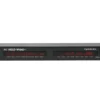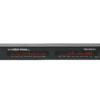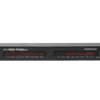What is sound pressure level (SPL)?
The sound level (on a basic level – how loud something is) can be perceived differently by different people so we need to have a means to get an objective measurement of sound level expressed in numerical terms. This is defined as Sound Pressure Level (SPL) and is quite a complex thing to get to grips with.
To understand what SPL is we must first understand what ‘Sound Pressure’ is. Sound pressure (p) is the average variation in atmospheric pressure caused by the sound. The unit of pressure measurement is pascal (Pa) Note: The term ‘sound pressure’ may be proceeded by other noise measurement terms such as ‘instantaneous’, ‘maximum’, and ‘peak’ (e.g. peak sound pressure).
Sound pressure level (SPL) is the pressure level of a sound, measured in decibels (dB). It is equal to 20 x the Log10 of the ratio of the Root Mean Square (RMS) of sound pressure to the reference of sound pressure (the reference sound pressure in air is 2 x 10-5 N/m2, or 0,00002 Pa). Or, in other words is the ratio of the absolute sound pressure against a reference level of sound in the air.
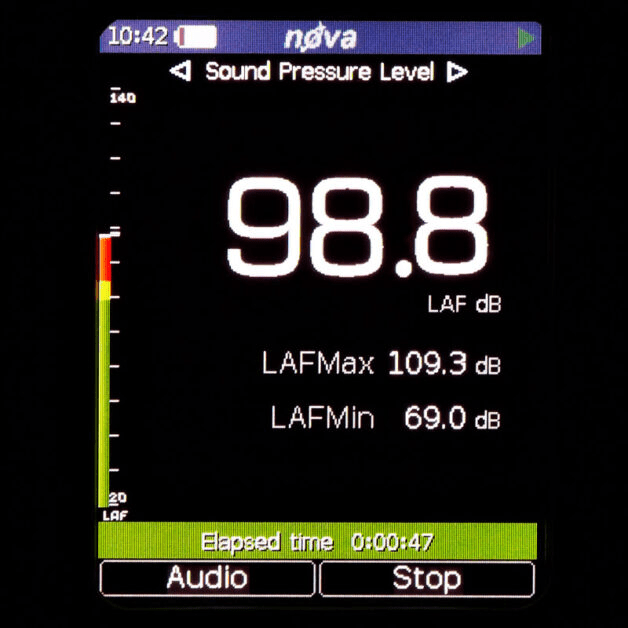
Sound Pressure Level Example
The sound pressure level for some sources may vary depending on the distance between the source and the listener, The values in thistable are provided as a general guide:
| Source | Sound Pressure Level (dB) |
|---|---|
| Threshold of Hearing | 0 |
| Rustling leaves | 20 |
| Quiet whisper (1 m) | 30 |
| Quiet office | 40 |
| Normal conversation at 1 m | 60 |
| Inside a car | 65-80 |
| Loud singing | 70 |
| Vacuum cleaner (3 m) | 75 |
| Buses, diesel trucks, motorcycles (15 m) | 80 |
| Jackhammer (15 m) | 90 |
| Subway (inside) | 94 |
| Lawn mower (1 m) | 107 |
| Deafening, human pain limit | 120 |
| Jet plane (30 m) | 130 |
| Threshold of pain | 140 |
| Military Jet Take-off (30 m) | 150 |
| Large military weapons | 180 |
Sound pressure level in digital cinemas
Each screen speaker system and the associated amplifiers must have a maximum output capability of 105 dB continuous sound pressure level (SPL) at the reference listening position (RLP), a point two-thirds of the distance to the rear wall in the auditorium, typically on the center line of the screen.
The Low-Frequency Effects channel subwoofer must have a flat response over the range of 31.5 to 120 Hz. When compared with a full-range screen channel, the subwoofer channel must be capable of producing +10 dB of in-band gain (SMPTE RP 200)
Each speaker and associated amplifier must have a maximum output capability of 99 dB continuous SPL at the RLP.
Each surround array and the associated amplifiers must be able to produce 105 dB continuous SPL at the RLP. To meet this requirement for surround arrays with fewer than four speakers, each speaker must be able to produce more than 99 dB continuous SPL.
How much SPL needed for Whole Home Audio System
When setting up a whole-home audio system, one of the key considerations is the Sound Pressure Level (SPL) required to ensure that the audio is clear, balanced, and enjoyable in every room. Here’s a quick guide to help you understand the SPL needs for different spaces and scenarios.
1. Background Music (60-70 dB)
- Living Room, Dining Room, Kitchen: For casual listening and background music, an SPL of around 60-70 dB is ideal. This level ensures the music is noticeable but not overpowering, allowing for conversation and other activities.
- Bedrooms: A slightly lower SPL of around 60 dB is recommended to create a relaxing atmosphere without disturbing sleep.
2. Entertainment Areas (70-80 dB)
- Home Theater, Family Room: For rooms where you might watch movies or play games, an SPL of 70-80 dB provides a more immersive experience. This level allows for clear dialogue and dynamic sound effects without being uncomfortably loud.
- Outdoor Areas: If you have an outdoor patio or deck, an SPL of around 75-80 dB can help the music cut through ambient noise and be enjoyed by everyone in the space.
3. High-Energy Zones (80-90 dB)
- Gym, Party Areas: For high-energy activities or parties, an SPL of 80-90 dB can create an exciting and lively atmosphere. This level is suitable for dance music and energetic soundtracks but should be used sparingly to avoid fatigue or discomfort.
Factors to Consider
- Room Size and Layout: Larger rooms may require higher SPL to ensure even coverage. Consider the acoustics of the space and whether there are any areas that might need additional speakers or adjustments.
- Personal Preferences: Some people prefer a louder audio experience, while others enjoy a more subtle background sound. Tailor the SPL to match your and your family’s preferences.
- Speaker Quality: High-quality speakers can deliver better sound at lower SPL, so investing in good equipment can enhance the overall listening experience.
Practical Tips
- Use a Sound Level Meter: To ensure you’re hitting the right SPL, use a sound level meter app on your smartphone. This tool can help you measure and adjust the audio levels in different rooms.
- Test Different Settings: Spend some time testing different SPL settings in each room to find the perfect balance. Pay attention to how the sound carries and adjust as needed.
- Consider Zoning: If your whole-home audio system supports zoning, you can set different SPL levels for different areas of your home, allowing for more personalized control.
Setting the right SPL for your whole-home audio system is essential for creating a harmonious and enjoyable listening experience. By understanding the ideal SPL for different rooms and activities, you can ensure that your audio system meets your needs and enhances your daily life. Whether you’re relaxing with background music or hosting a lively party, the right SPL will make all the difference.
How to Lower your SPL
Many people end up with speakers that have a higher SPL than they need, and the result can be an uncomfortably loud listening experience. Turning down the volume is the obvious solution, but some folks still want the option to go from 0 to 100. In that case, you can use the EQ settings in the HOLOHOME app to bring the levels down while still maintaining that full range of control.


